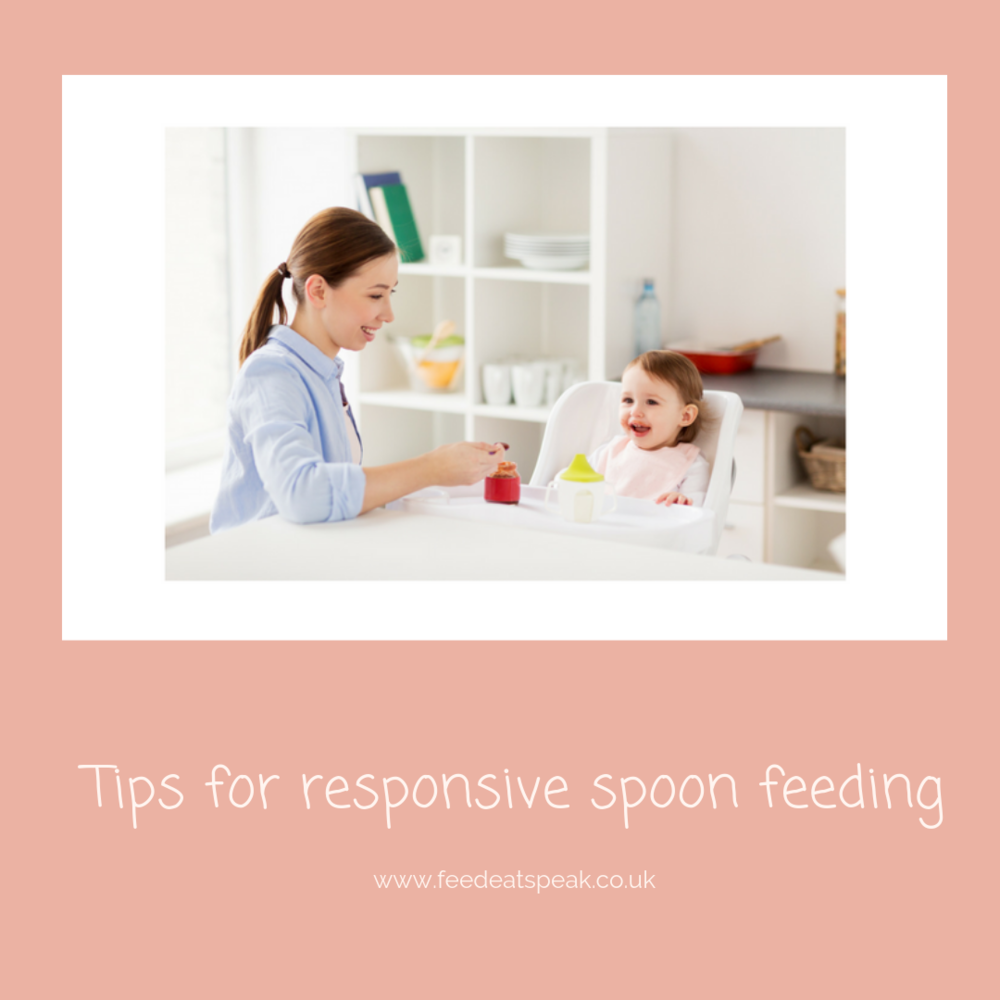Tips for responsive spoon feeding
Feed Eat Speak & allaboutbabies have teamed up to bring you our top tips for responsive spoon feeding.
We are aware that Baby-Led Weaning isn’t for every parent or every baby so here are our top tips for spoon feeding parents.
1. Follow your baby’s lead. This may sound obvious but often babies take a bit of time to get going with weaning and may not take large volumes of solids. Many parents worry about this. However, milk remains the main source of nutrition for the first year of life. It may gradually decrease your baby gets closer to one year so you have plenty of time to go at the right pace for your baby.
2. Wait for your baby to open his mouth. Just like us, babies need time to process what they are eating and the look and smell of what is being offered. This may mean they take time to consider it before opening their mouth. Make mealtimes relaxing and present the spoon slowly. Hold it close to their mouth and wait for them to open and accept it.
3. Enjoy mealtimes together. Babies (like adults) learn best when they are relaxed. They also learn from watching others. Rather than standing over your little one whilst spoon-feeding, sit down together and try to be close and at the same level as them. If you have other children try to find opportunities for family meals times. Eating alongside your baby is a great way to spark their natural curiosity about food and prepare them for self-feeding too.
4. Slow it down. Your baby is born with a natural “full switch” which will click on to avoid them over-eating, but it takes time for it to switch on. If you spoon-feed your baby quickly those opportunities to register that full feeling don’t happen. This can lead to overeating and dropping milk feeds too fast. It can also impact their ability to know when they are full as they grow up. Take it slow, allow pauses between mouthfuls and most importantly stop once you baby shows they are full (see point 5).
5. Move on at the right time. Your baby will become more independent as he develops. If you are spoon-feeding and find your little one reaching for the spoon take the plunge and give it to them! Yes, it might (it will) get messy but the aim with weaning is to teach your little ones to eat and form a positive relationship with food. What better way than just letting them get stuck in. It is also important to move on to more challenging chewable textures at the right time (after the first few weeks) or your little one might struggle to learn this skill. Start by offering soft sticks of finger foods and stop blending foods and offer soft foods instead (eg scrambled egg, soft pasta and sauce, meatballs and mashed potato)
6. Don’t distract them. Peppa Pig, ipads and “here comes the aeroplane” are all common methods of distraction aimed to encourage a baby to eat who isn’t showing willing. Remember, your aim is to help your baby to develop positive food habits. Mindless eating and forcing that one extra mouthful can lead to negative food associations as they grow up.

